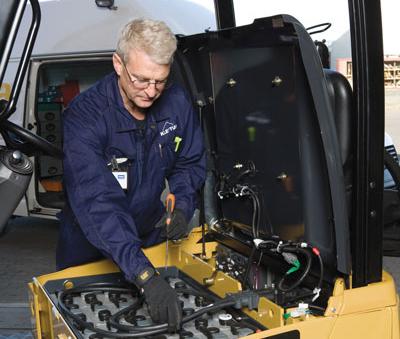The trend towards electric forklift trucks brings with it many benefits for the warehouse. The environment becomes cleaner and environmental noise is substantially reduced. Besides, in many European countries it is no longer permitted to drive diesel trucks inside.
But electric trucks run on traction batteries. Obviously, these need to be charged from time to time. To guarantee a shift without too much disruption, many companies create a battery charging room to make sure batteries are loaded properly and ready to go in order to minimise downtime. Warehouse managers need to be aware of the legislation in their country regarding this topic.
But first, what are some of the potential risks for a battery room?
- Gases can emerge when loading the batteries.
- Overheating due to connecting charging equipment with wrong extension cables.
- Short-circuit due to damaged connecting cables
- Loading devices are located near the overhead doors which gives an increased risk of collision damage
- Some charging stations are placed near storage rackings with potentially flammable goods.
- Risk of explosion and fire.
And these are just a few examples. This is why every precaution needs to be taken to minimise the risks.
Today we suggest five essential ways to increase the safety of the battery room. In all cases, always consult with professionals about the best arrangements you can make.
- Make sure your staff wear personal protective equipment. This includes approved face shields and goggles, acid-resistant gloves, slip- and acid-resistant footwear with a protected toe, sufficient fire extinguishers and adequate amounts of neutralizer.
- Our first point was about prevention. In case of an accident there should be an ample choice of must-have equipment: eye wash and shower systems.
- Control the air. The battery charging process produces gases that may create adverse exposures for employees, so you must install a good exhaust system. Even better, hire a certified industrial hygienist to assess the situation.
- Only allow people in the room that have followed the appropriate training. Employees who change batteries should receive formal documented initial and periodical training. This could include operator/changer responsibilities, required procedures, inspection requirements, care and storage of protective equipment and safe work practices.
- Check, check , check. Have regular inspections preferably carried out by professionals. Battery racks, for example, should be frequently inspected for damage, corrosion, weld/fastener quality and roller functionality. The chargers also need regular inspection.
